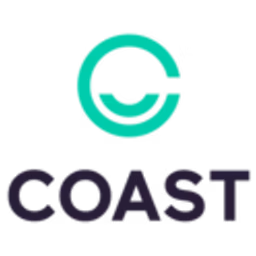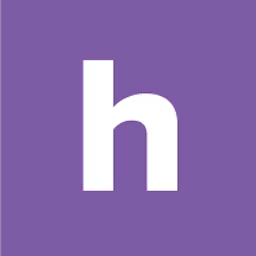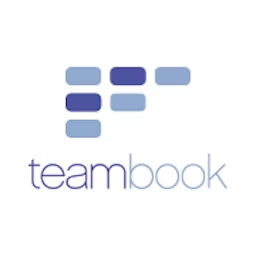Spreadsheet-based schedules might be the go-to method for small businesses just starting out, but they can be time-consuming and prone to errors, especially with unforeseen absences. With multiple tools and spreadsheets, things often slip through the cracks and hinder effective communication for business managers. Solution? Employee scheduling software.
To explore software functionalities without the commitment of purchasing, small businesses can go with a free employee scheduling tool first. You can identify the necessary features for your business operations and test multiple options before finalizing a product.
This article highlights, in alphabetical order, the six top-rated free employee scheduling software products based on verified software reviews. Read more.
1. Coast
Coast is a mobile-first tool for employee scheduling, maintenance management, task management, and more. The app facilitates easy communication between managers and employees. You can send messages, share important updates, and notify the team about any schedule changes or announcements. It includes time- and attendance-tracking features, allowing employees to clock in and out using the app. This helps managers track hours worked and support payroll processes.
Under its free version, Coast offers unlimited visual elements and messages, along with 24/7 support via live chat, email, and phone. These visual elements represent specific information or actions related to employee scheduling. For example, schedule elements represent individual shifts or blocks of time within the schedule. These include details such as the date, time, employee assigned to the shift, and any other notes.
Free featuresEmployee scheduling: Build schedules and notify your staff of any upcoming or updated shifts. An up-to-date view of all the scheduled projects reduces duplicate scheduling errors and no-shows.
Shift swaps: Allow your staff to find replacements in case of unavailability and swap shifts with fellow employees. Any shift swaps will be sent to business managers for approval and your staff will be automatically notified of the shift change.
Task checklists: Create a checklist of all the tasks assigned for the day for each employee to review and complete. You can track if the assigned tasks are completed on time, improving productivity.
Customer support options: Live chat, email, and phone
Who should consider Coast?
If ensuring seamless team communication is at the center of your employee scheduling and productivity strategy, consider Coast. The software includes a dedicated app to manage your team tasks, schedules, work orders, and more. You can view, edit, or delete any details for different tasks from within the employee scheduling app. Additionally, when using Coast, the messages you send and receive are directly linked to the specific context or task at hand. This streamlines conversations and eliminates lost messages and email chains.
Trial/Free Version
- Free Trial
- Free Version
Cost to upgrade
Device compatibility
2. Findmyshift
Findmyshift is designed like a spreadsheet, making it easy for those who don’t want to opt for employee scheduling dashboards and planners. It lets you create and store schedule templates for recurring shift patterns. Multi-cell editing enables you to add and edit shifts for up to 140 days at once. The tool includes a team notice board through which employees can request shifts, submit cancellations, swap shifts, access their schedules, and receive shift reminders.
With its free version, Findmyshift offers limited access to several scheduling features, including one week of forward planning and historical scheduling data. Additionally, the free version includes time sheets, shift reminders, and document storage to enhance productivity.
Free featuresDrag-and-drop editor: Modify schedules by clicking on a shift and dragging it to a different time or day. It simplifies the process of shifting tasks between employees or rearranging schedules to accommodate staffing changes.
Employee time clocking: Enable employees to clock in and out from within the software. This facilitates accurate employee time tracking, making it easy to manage attendance, calculate payroll, and ensure compliance with labor laws.
Historical data: Capture one week’s data related to employee schedules, shifts, and time-offs to gain insights into staffing requirements and past scheduling patterns and optimize scheduling processes.
Customer support options: Email, live chat, and WhatsApp
Who should consider Findmyshift?
If you want to enhance your employee scheduling experience but do not want tools with complex dashboards and multiple visualization elements, consider Findmyshift. It has a user interface similar to an Excel spreadsheet and a drag-and-drop editor to simplify scheduling processes. Additionally, Findmyshift automates wage calculation based on employee roles, shift times, or any other specific criteria, saving time and ensuring accurate compensation.
Trial/Free Version
- Free Trial
- Free Version
Cost to upgrade
Device compatibility
/ Pro tip
Look for employee communication tools such as in-app messaging, email notifications, or SMS alerts as they enable managers to share important announcements, shift updates, or schedule changes with their employees in real time. Look for features allowing employees to view their schedules, request shift swaps, or change availability.
3. Homebase
Homebase is a scheduling and time-tracking solution that automatically notifies employees about schedule updates and shift changes. Employees also get the flexibility to cover and trade shifts. Its time clock feature helps track time and prevent early check-ins and sends alerts when employees are approaching overtime.
With the free version of Homebase, you get basic scheduling and time-tracking features, as well as employee management functionalities. It lets you send messages to your team in real time while also allowing you to offer them flexible pay benefits such as cash out, at no cost to your business.
Free featuresWeekly staff schedule builder: Create and manage weekly employee schedules using pre-installed templates or auto-scheduling. You can assign shifts and customize schedules based on individual availability or business needs.
Multi-device clock ins and outs: Let your employees clock in and out of their shifts using various devices, such as computers or mobile devices. Whether they are in the office or working remotely, employees can log their work hours, enabling accurate attendance tracking for payroll.
Time sheets: Log start and end times for each shift, record break durations, and add additional notes to the time sheet. It provides managers with an overview of employee work hours, allowing them to review, edit, and approve time sheets for payroll.
Customer support options: Help center and email
Who should consider Homebase?
Small businesses looking for basic functionality to manage employee schedules for payroll processing can consider Homebase. By converting time sheets into hours, Homebase automatically calculates wages and taxes, saving valuable time and reducing the risk of manual errors. Another perk for employees is that Homebase allows them to request early access to their wages. This feature offers a practical solution for financial emergencies, enabling employees to handle unexpected expenses or situations that may arise between pay periods.
Trial/Free Version
- Free Trial
- Free Version
Cost to upgrade
Device compatibility
4. Sling
Along with employee scheduling capabilities, if you want to optimize your labor budget and make better staffing decisions, try Sling. The tool lets you track your labor expenses during a specific time period and generate daily, weekly, or monthly reports to analyze labor data, determine inconsistencies, and improve operational strategies.
Sling’s free version includes shift alarms that notify employees about upcoming shifts and reduce the chances of missed or late shifts. With shift offers, employees can swap or pick up additional shifts, fostering a flexible work environment. The time-off request feature allows employees to submit their time-off preferences, enabling managers to cut out double bookings and overlaps with employee work schedules.
Free featuresShift scheduling: Use a drag-and-drop editor to create shifts and assign specific tasks to individual employees or groups of employees based on their availability, skills, and preferences.
Shift templates: Set up templates for common shift patterns, such as morning, afternoon, and night shifts, or any other custom shift pattern, that suit your business requirements, to save time and enhance the scheduling process.
Long-term scheduling: Plan employee schedules in advance for an extended period, typically spanning weeks or months, by taking into account factors such as projected workflow, employee availability, and anticipated changes in demand.
Customer support options: Email, message, and a help center
Who should consider Sling?
Sling is a good option not just for businesses that value employee engagement and flexibility, but also for those aiming to optimize labor budget and staffing decisions. Features such as shift alarms and trading and time-off management help promote employee engagement, reduce missed or late shifts, and enable a collaborative work environment. It also fuels staffing efficiency with the ability to track and analyze labor expenses.
Trial/Free Version
- Free Trial
- Free Version
Cost to upgrade
Device compatibility
/ Pro tip
Evaluate shift management capabilities with flexible scheduling options such as defining shift lengths, assigning multiple employees to a shift, and accommodating shift rotations or split shifts. The software should also provide visibility into employee availability, skills, and preferences to help you make informed shift assignments.
5. Teambook
As a project resource planning tool, Teambook allows you to allocate teams based on required hours and skills for each project. It tracks employee activities and time-off periods, offering a bird’s-eye view to stakeholders. In case you are uncertain about the timeline of a project, you can allocate the task to a certain employee and set a tentative completion date with the option to confirm the same later. Teambook enhances the process of accommodating schedule changes with features such as bulk updates and drag-and-drop functionality.
Teambook’s free version offers access to a shift-planning board and dashboard for a holistic view of all active and completed projects. The tool lets you add or remove users and define their roles to customize your project resources. Under the free version, you can also use tags to attribute skills to your consultants and make sure they are allocated to projects that match their skills.
Free featuresPlanner board: Track who’s working on what and when, who’s available, and who’s off using a planner board. You can also view projects and edit milestones corresponding to each project.
Actual activity recording: Let your employees log in their actual activities against the tasks that are pre-filled as per monthly planning. You can review these actuals, approve them, and ensure that the actual hours spent on projects are accurately logged.
Analysis and filtering: Filter projects by skill sets, clients, users, and tags to refine data points and monitor employee availability, workload distribution, and resource utilization.
Customer support options: Email and a knowledge base
Who should consider Teambook?
If you manage skill-intensive projects that require employee allocation based on expertise, consider Teambook. Its tagging system allows you to assign tags to your employees based on their competencies and ensure they are allocated to projects that align with their capabilities. Teambook conducts staffing analysis, enabling you to forecast and optimize resource allocation. It takes project timelines, resource availability, and required skills into account, ensuring accurate resource allocation and utilization.
Trial/Free Version
- Free Trial
- Free Version
Cost to upgrade
Device compatibility
6. TimeWellScheduled
Designed to meet the unique requirements of the retail industry, TimeWellScheduled supports employee schedule flexibility by focusing on factors such as shift variability. It allows your team members to manage schedules based on availability, submit time-off requests, and request shift trades with fellow employees. This tool lets you create a list of skills associated with each task. When creating a schedule, you can filter employees based on their competencies and select those with the necessary skills for a particular project.
If you want to start with basic scheduling features, go with the free version. Besides shift scheduling, this version lets you monitor shift changes, make quick shift adjustments, and send daily or weekly shift alerts to employees. With the audit trail feature, you can view changes or adjustments made to any schedule, helping you avoid potential scheduling errors and complications.
Free featuresReal-time dashboard: Monitor employees during the scheduled shifts and check the status of assigned tasks in real time. You can also make required schedule changes or adjustments for timely project completion.
Shift swapping: Enable your employees to request or accept a shift swap even from their mobile device. As a manager, you can respond to these requests and make quick shift adjustments without hampering the project timeline.
Notes: Add notes on an employee schedule. This allows you to send reminders and updates, ensuring your employees are prepared with the required information when checking their schedules.
Customer support options: Online chat, email, tickets, and a help center
Who should consider TimeWellScheduled?
TimeWellScheduled is a good option for businesses in the retail industry that prioritize shift variability and shift trading among fellow employees. Additionally, you can consider this tool to ensure that the scheduled tasks align with your employees' core competencies/skill sets or if you want to empower your employees to manage their time and have more accountability.
Trial/Free Version
- Free Trial
- Free Version
Cost to upgrade
Device compatibility
/ Pro tip
Opt for a solution that comes with report generation to help you make data-driven business decisions and improve employee management strategies. For example, shift-duration reports help reduce overtime by letting managers efficiently track employee workload in real time. Similarly, workload reports help management make hiring decisions.
What is the cost to upgrade from free employee scheduling software to a paid one?
An employee scheduling software upgrade can be as low as $3.99 per user, per month, or increase up to $22+ per month, depending on various factors—features, number of users, number of employees, business locations, and more. Most employee scheduling software typically includes the following subscription plans:
Free trial: No-cost trial plans ranging from a week to a month, giving users access to either all or limited features of the software. These are ideal for businesses that wish to try out a tool before purchasing it.
Free version: Free software plans offer basic features and limited premium feature access. These are ideal for small businesses or individuals with a limited budget.
Entry-level: Start at $3.99 per month and offer limited features. These are recommended for small businesses or teams with basic feature requirements such as time tracking, customizable reporting, and time audits.
Mid-tier: These range from $5.49 to $16 per month and offer features such as attendance and overtime tracking, approval dashboard, and more. These are ideal for businesses that have outgrown basic employee scheduling solutions but don’t require the full range of functionality offered by enterprise-level tools.
High-end: Advanced plans go up to $22 per month and offer forecasting, expense tracking, labor costs and profit calculations, and multiple control accounts. These are ideal for cross-functional businesses with multiple teams and departments that need a customized solution.
Hidden costs associated with employee scheduling software
Besides the software license itself, there may be additional costs associated with staff scheduling software, including data migration, training, integration, hardware and IT, and maintenance/upgrades, which small businesses should budget for when considering a new tool.
Frequently asked questions when selecting free employee scheduling software
Can the software be integrated with payroll systems?
An employee scheduling app with payroll integrations will make it easier for you to pay wages to your employees. Otherwise, you’ll end up spending hours determining your employees’ work hours.
Does the free tool offer real-time activity monitoring?
Real-time activity monitoring typically allows managers or administrators to track employee actions and activities as they occur. This can include monitoring shift changes, clock-in/out times, break durations, and other relevant information. While some free employee scheduling tools may offer real-time activity monitoring, the feature’s capability can vary across different software providers.
Does the free tool work across all business locations?
Most employee scheduling software has different pricing plans as per the number of users and business locations they serve. So, if you have a multi-location business, look for a free solution that you can utilize at all your locations.





